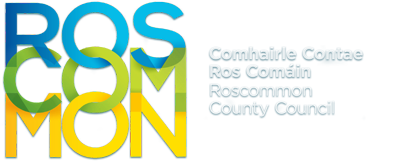Athleague
A village steeped in history

The little village known as Athleague to day was called Athliag Meanacain in ancient times. Athliag Meanacain means the stony ford of St.Meanacain, the patron saint of the place. His feast day is 7th of February.
It is recognized by great historians, both past and present, that Athleague is steeped in history. In days gone by it was part of the vast territory ruled by the powerful O’Kelly’s of Hy-many. Three of their castles were once situated in the parish. On the banks of the river Suck beside the village today can be seen the majestic ruins of the one remaining.
Nearby stands the imposing structure of the Mill and it’s powerful millwheel, once driven by the swift flowing water of the Suck. Across the river on the grounds of the old cemetery is the Angling/Visitor Centre. This Church of Ireland building was built in 1841 and restored by The Suck Valley Development Co-operative in 1998.
On the road from Athleague to Fuerty stand the remains of the once handsome edifice of the notorious Ormsby family. It was called Tubbervaddy, "The well of the dog". This ruin has proved an attraction for both historians and tourists.
The original Castle belonged to the Skeffington Family but was taken over by Henry Ormsby who settled in Ireland in 1590.

The Orsmbys were some of the most ruthless soldiers ever to set foot in Ireland. Each was more barbaric than the one who went before. Gilbert followed Henry and was a most vicious priest hunter. He wrote "Nor do I believe that we shall ever be safe or quiet, ‘till a wolf’s head and priest’s head be at the same rate". He lived in constant fear of the natives. Gilbert’s only son Robert, known locally as "Riobard na Gliogarnach" - Robert of the jingling harness - was totally barbaric. In the front lawn of Tubbervaddy castle was a gibbet which the Orsmby’s never liked to see idle. Robert systematically pillaged the surrounding countryside. One morning he hanged a widow woman’s three sons for no apparent reason. The same day he set out for Dublin to attend a meeting of the “Hell Fire Club. Two days later, when he was returning home on his big steed, he visited a blacksmith at the top of the hill of Scrine. He ordered the blacksmith to put a curse on him as he wanted to prove that there was no truth in the "blacksmith’s curse". The blacksmith reluctantly carried out Orsmby’s command. He was only gone a few hundred yards when he fell from his horse. His foot caught in the stirrup but the horse continued all the way back to the courtyard at Tubbervaddy. All that was left was his limbs and body, which were buried in Fuerty graveyard the following day. That night the grave was attacked by wolves; his body was totally dismembered and dragged around the local countryside.
Robert’s grandson built Rookwood House in 1730. They were very bigoted but showed some glimmer of Christianity. Many of their descendants live in Canada today and one nice lady, who never mentions their barbarity, lives in Co, Mayo.
Following the flow of the river we reach Rookwood, where once lived Edmund and Sarah Kelly in their beautiful Georgian mansion. Lewis, in his topographical dictionary of Ireland, referred to it as one of the principal seats in the parish. The mansion is no longer there, however, the memory of Sarah and places of historical interest relevant to Athleague are recorded in a book entitled "The Strange Story of Sarah Kelly" published by Vera Hughes in 1988.
In the village of Athleague is Fort Lyster, once the home of Aileen Cust, first woman veterinary surgeon of the British Isles.






